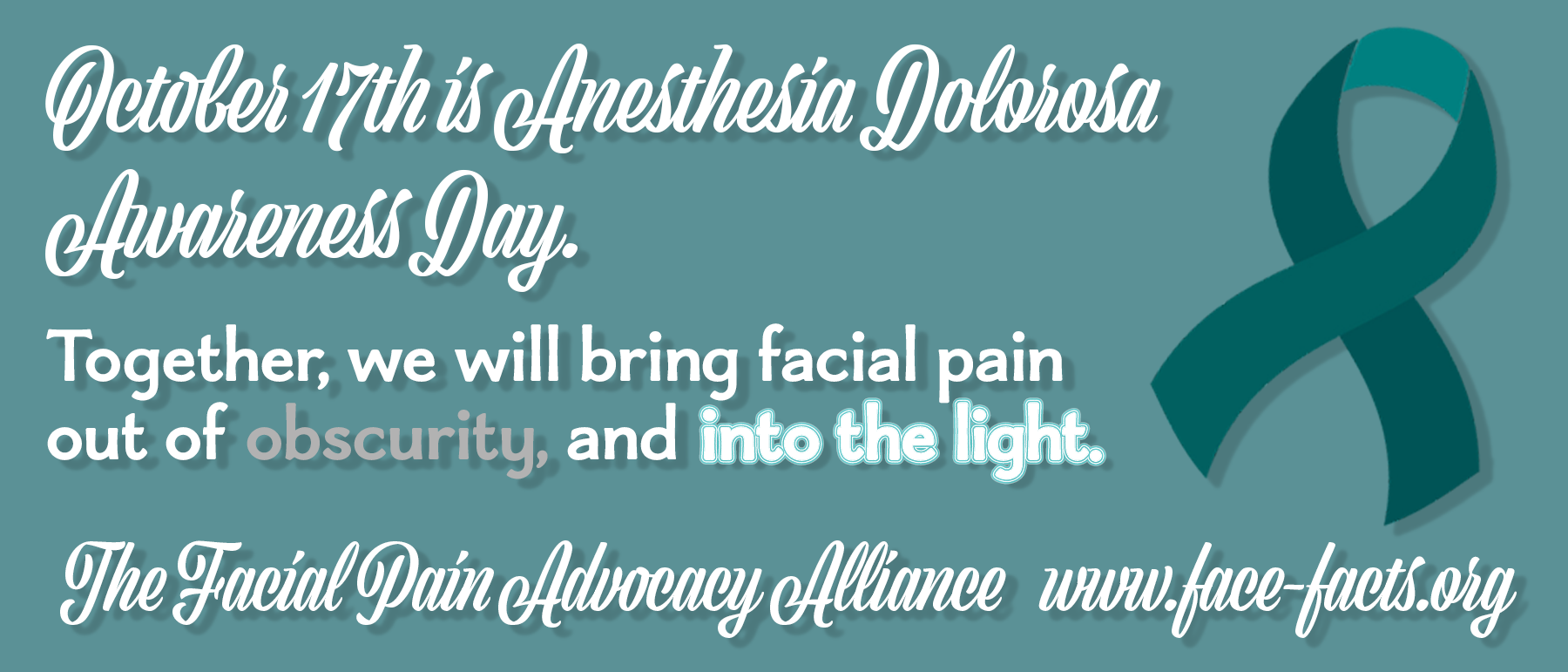There is more to Facial Pain Awareness than just trigeminal neuralgia. TN is not the only neuropathic facial pain condition. There are many other facial pain conditions that have never been individually recognized or singled out for recognition by any facial pain organization. Because they are so rare, those who have these conditions have had to reside under the umbrella of TN in order to find any community support or recognition. That is, until now.
FPAA is serious about supporting all facial pain patients. We don’t just pay lip service to the inclusivity of the term “facial pain.” By creating Facial Pain Awareness Month, we are proudly giving voice to these other facial pain conditions: geniculate neuralgia, glossopharyngeal neuralgia, anesthesia dolorosa, cluster headache, paroxysmal hemicrania, SUNCT and SUNA.
Please allow me to introduce Anesthesia Dolorosa Awareness Day on October 17th. TOMORROW!
WHAT IS Anesthesia Dolorosa?
Anesthesia dolorosa (AD) and trigeminal deafferentation pain (TDP) are two other types of pain associated with the trigeminal nerve, unique in that they are caused not by a vascular compression, but by damage to the nerve. Dreaded even among trigeminal neuralgia sufferers, both are often intractable and resistant to treatment.
The Difference Between AD and TDP
AD is characterized by:
- total, one sided, facial numbness from the chin to the top of the head, ear to facial midline
- severe and constant deafferentation pain in the same area
TDP is only slightly different from AD in fact that the numbness is not always 100%.
The medical term, “deafferentation,” means the elimination or interruption of sensorynerve impulses resulting from the destruction of or injury to the sensory nerve fibers. This nerve damage results in severe, unceasing pain.

Symptoms
AD/TDP is characterized by constant pain on the forehead, cheek, and/or chin accompanied by numbness to the same area(s). It is not uncommon for an AD/TDP patient to also report pain in the mouth. Unlike the other cranial neuralgias, there are no periods of remission and the pain is unceasing. Words used to describe the pain of AD/TDP:
- burning
- electric
- ice cold
- chemical
In many cases, AD/TDP is accompanied by sensations of parts of the affected area being pulled or tugged at, particularly in the teeth and gums.
As it results from injury to the trigeminal nerve itself, it is almost always limited to one side of the face.
SOCIAL MEDIA AWARENESS
Click on the image of the overlay of your choice to create a GN Awareness Day social media profile picture.
 Or right-click on the image below to save the image for use as a social media profile picture.
Or right-click on the image below to save the image for use as a social media profile picture.

TOGETHER, WE WILL BRING FACIAL PAIN
OUT OF OBSCURITY AND
INTO THE LIGHT.



